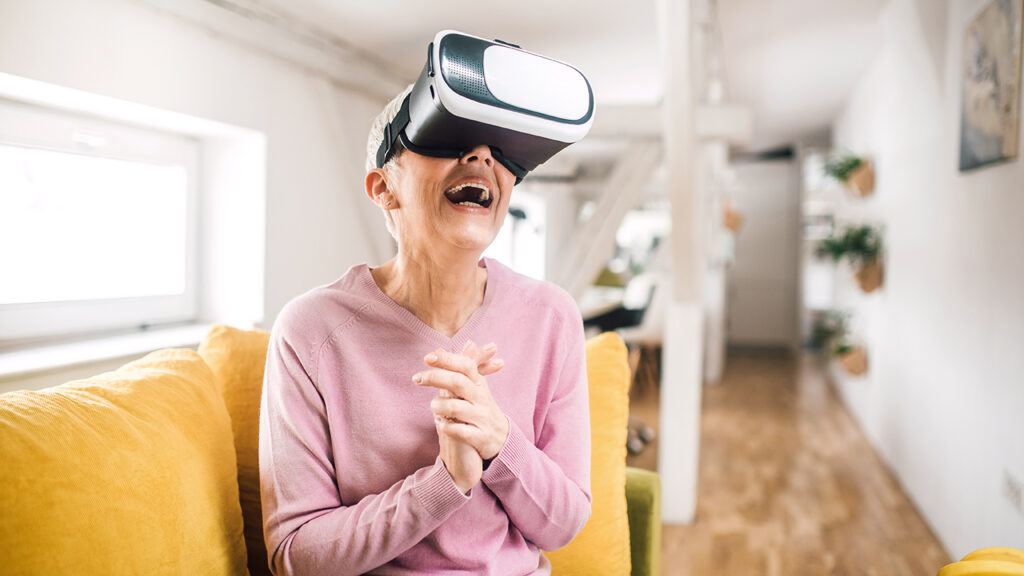
Two of the most popular technologies being rapidly introduced in senior living settings are remote monitoring systems and virtual reality platforms, albeit for different reasons.
New advances in measuring brain activity, however, could combine VR with monitoring in a way that could benefit older adults and senior care.
Collecting data on electroencephalography, or EEG, can offer critical data about brain activity and address conditions that often plague older adults, such as sleep disorders, brain lesions and stroke.
Typically, EEG measurements are recorded using electrodes attached to someone’s head. A low-cost EEG system, however, could be attached to a VR headset, researchers explained.
“VR can effectively block external interference, provide highly controllable visual inputs, and due to its immersive nature, elicit stronger emotional arousal in subjects than traditional stimuli,” the study authors wrote. “Consequently, VR is widely used in psychology and cognitive science research, with an increasing number of researchers attempting to shift neurophysiological testing into the VR environment.”
The task of designing an EEG system that was small enough to be part of a VR headset was “challenging,” the researchers acknowledged, but the method they developed was successful in precisely measuring brain activity, the data showed.
Although VR within senior living mostly has been deployed for entertainment or socializing purposes, VR experiences increasingly are seen as a potential tool for rehab and therapy.
In addition, certain VR programs are designed to help build the relationship between senior living residents and their caregivers, VR developers recently told the McKnight’s Tech Daily.
The EEG study, which was recently published in the journal HardwareX, was conducted mainly to provide proof of concept of the VR/EEG model, the researchers noted. The design and construction process was carefully detailed so that future researchers could use the system to tailor a study to more specific needs.


